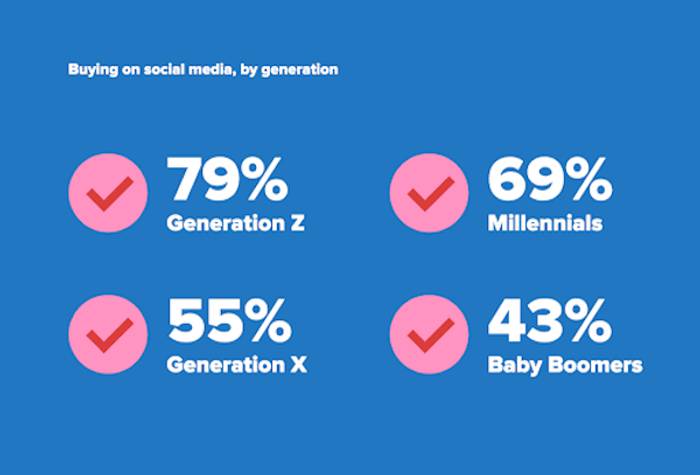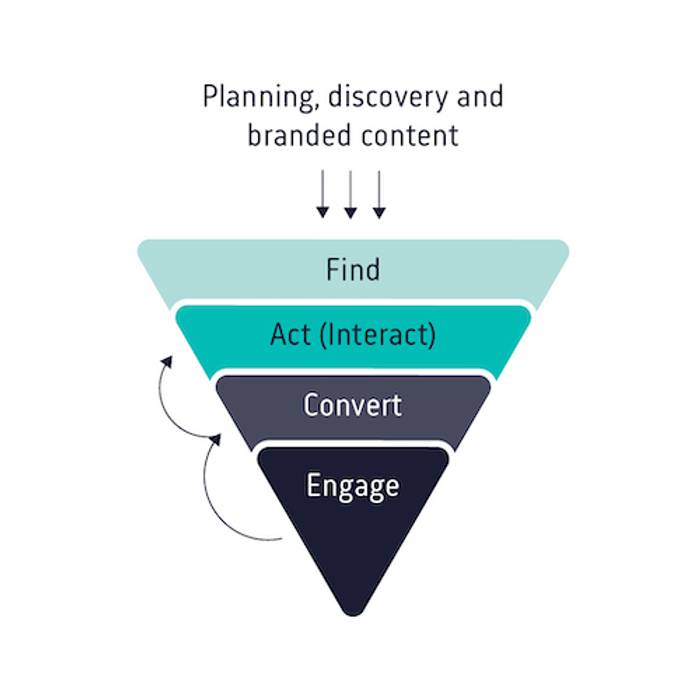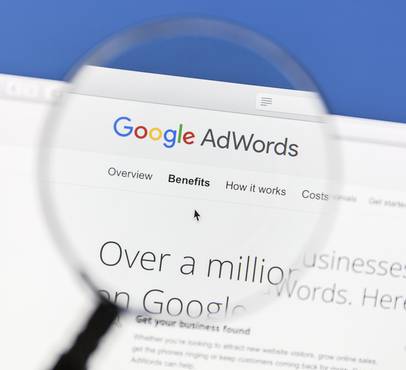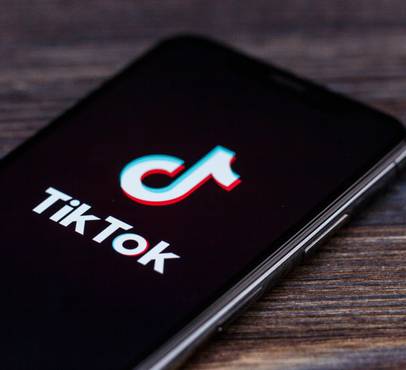Paid Social Media presents a wide range of possibilities for any type of business, from boosting your organic content to new audiences, to more advanced approaches such as dynamic retargeting, macros and lead generation. Whether it’s raising brand awareness, driving website traffic, or looking for those all-important leads, paid social media is a cost-effective way to reach your target audiences.
If you’re unsure where to start, then this blog is for you!
Ensure you pick the right channel for your business
Your paid social strategy is just as important as your organic social strategy. Each social channel has its own strengths, weaknesses and opportunities, and your business doesn’t necessarily need to use them all.
Often your strongest organic channel will be a good indicator of where your business will thrive (by leveraging your existing following), but that doesn’t mean that you shouldn’t explore the untapped potential of emerging or complimentary channels such as TikTok or Instagram. The days of Facebook being purely for B2C and LinkedIn purely for B2B are long gone!
Perhaps the most powerful channels for advertising are Facebook and Instagram, which offer more granular targeting techniques than Twitter, LinkedIn, Pinterest and TikTok, allowing you to refine your audiences and reach them at multiple touch-points.
Not only can you target demographics such as age, gender and location, Facebook is also available to identify life stages. For example, you can target newly engaged people, as well as their friends.
Check out our Coco Boo Loves case studyto learn more about how we delivered a 1906% return on ad spend for the fashion brand.
Maybe you want to reach “decision-makers”, so LinkedIn could be the channel for you. Or if you’re looking to stay ahead of the curve and reach younger audiences, try advertising on TikTok. There is sure to be a platform (or platforms!) that suits your business’ needs.
Have a plan and keep focused
Throwing money at your social media without consideration or strategy will make it harder for you to reach your goals and leave you with that feeling that “it’s just not working.” Key opportunities such as product launches, seasonal campaigns or a limited-time offer will provide you with focus for your ad campaigns, and help you to prioritise your key objectives. Social advertising can reach customers through all stages of the marketing funnel, Awareness, Consideration and Conversion, so selecting the right objectives will align your ads with your business strategy.
Update: Since this blog was written, we now prefer to use the 'messy hexagon' model when describing a typical customer journey. Whilst the traditional 'AIDA' sales funnel stills holds value in some circumstances, we believe the messy hexagon provides an alternative and more realistic view of the customer's path to purchase.
Make social advertising part of your wider marketing mix
As well as considering your overall business strategy, other channels can assist with your paid social strategy. Perhaps the most obvious one is to ensure your paid and organic social media are cohesive, with consistent messaging across both. Customers click on your ad to start their journey with you, so if the next step (visiting your Instagram profile, for example) looks completely different, then you risk losing them before they’ve had a chance to learn more.
But it’s not just organic social media. You can also take learnings from other digital marketing channels, such as Pay Per Click (PPC) Advertising. PPC and Paid Social work hand in hand, as both activities can help build website visits and contribute to your sales funnel. Running retargeting ads on social media will help you to re-engage with potential customers who may have initially found your brand through a PPC search. This works both ways, your Social ads can also reach potential customers who may then, at a later date, search for you and enter the site through a PPC ad.
The wider digital ecosystem can do more than just build you an audience. Websites built on Shopify can use in-platform apps to facilitate advertising, making tasks that are typically more complex to a first-time advertiser - such as adding a tracking pixel to your website - a breeze. With platforms such as Amazon and Zoom developing their own attribution models, social media advertisers are now able to report more effectively on conversions from their ads.
Maximise sales with Social Commerce
With 54% of social media users researching products on social platforms, social commerce tools on Facebook and Instagram have quite literally turned our feeds into virtual shop windows.
The ability to integrate your website’s products with your social media (through tagged posts and Facebook or Instagram shops) helps to shorten your customers’ journey, creating a smooth transition from discovery to purchase. This is further strengthened by running awareness campaigns alongside your conversion campaigns, helping potential customers to easily discover your products. You can then retarget people who have viewed items through your Facebook and Instagram shops with further ads!
Creative is Key
When creating artwork for a social media campaign, ask yourself, “Would I scroll past this if it was in my own feed?”. If your answer is yes, then perhaps you need to go back to the drawing board.
As with most forms of advertising, your social media ads need to grab the customers’ attention and tell your story in a very small window. You’ll need to create a balance between communicating all of your key information while still creating content that’s punchy enough to stop them mid-scroll.
Facebook’s best practice recommends using less than 20% text in your artwork - encouraging you to show rather than tell. Facebook will also add a “read more” link to ad copy that’s more than 3 lines, which can impact ad performance - especially if you’re running a campaign with a Traffic objective, as this will count as a link click.
It’s important for your ads to stand out from others, but having eyes on what others in your industry are up to can help ensure that you remain competitive. Take time to note any ads that have stopped you from scrolling recently and learn from them, even if they’re not directly tied to your business offering. Facebook’s Ads Library allows you to see whether your competitors are using paid advertising and if so, what they look like, so be sure to scan over them.
Not only does your creative need to be eye-catching, it also needs to be optimised for your channel and placement. This is often a pitfall for marketers, as it can be easy to view your artwork in isolation, not considering how it appears across placements and devices. Mobile is key; in 2020, 79% of Facebook users accessed this channel from mobile devices only, so it's vital for you to ensure your artwork is still readable on smaller screens. All social media advertising platforms have tools that allow you to preview your ads, so we encourage you to utilise these when creating your campaign.
When it comes to funding your ads and figuring out a suitable budget, it's important to manage your expectations for success with what you can afford, whilst also keeping in mind the recent 60% increase in media spend from consumers. In a post-pandemic world where DTC brands are booming and have significantly increased their media spend to remain present, it's important to remember that last year's budget may no longer be competitive within your market, and so it should be checked on a rolling basis to remain a present in a heavily saturated market place.
Who should my social media ads target?
Finally, make sure that you’re targeting the right people! Knowing your customer demographics is key to ensuring that your social media ads work effectively. There are 53 million active social media users in the UK and it’s estimated that £5.25 million will be spent on social media advertising this year. With such a large audience being targeted by thousands of advertisers, it’s vital that you reach social media users who will engage with your brand and avoid spending money on those who won’t.
When you create an organic social media post, this can be viewed by anyone, anywhere, at any time. But with paid social media, these are all within your control. You can target demographics such as age, gender and location, as well as more detailed audiences exclusive to your business, such as previous customers or abandoned baskets. With platforms like Facebook offering powerful ‘lookalike’ audiences, you can use your existing customers to help find new social media users to target - all at the click of a button.
Your campaign objective will also give an indication of who to target. ‘Cold’ audiences are best served with Awareness ads, and as they move through the sales funnel to the Consideration stage you can then target ‘Hot’ audiences with ads designed to convert. While sales may be a key objective for you, running Conversion ads that target large, cold audiences will result in high Cost per Result and again that feeling of “it’s not working.” Whereas a multi-level campaign strategy will guide customers from discovery to purchase.
Even if you’re not 100% sure what your customer demographic looks like, social media advertising can help you uncover who your audience is. Being able to access detailed information regarding your ads’ delivery means that with each campaign you run, the more you’ll be able to refine your strategy to make your ads work even harder for you.
Split-test, refine, and split-test again!
Whether you’re new to social media or it’s been part of your digital strategy for years, here at Extreme we’re huge fans of split testing our clients’ ads. With so many platforms and approaches available, you’re always one step away from finding that perfect combination of platform, audience and approach.
Split-testing may even help you discover more about your customers. Often we’ve seen Facebook Ads Manager delivery reports giving us insights on audience profiles that we could never have anticipated! And just because you think you’ve found the perfect combination, it doesn’t mean that this might not change. As platforms and customer habits evolve, continuously refining your strategy will help you ensure that you’re always ahead of the game!
Looking to elevate your business through paid social media?
Get in touch for our expert guidance.Post by

Laura joined Team Extreme in 2017 and through the years has refined her social media skills to become our Paid Social Strategist. She works with our social clients to plan and execute content across a broad range of sectors and channels, helping clients maximise their results and ROI.
Project







